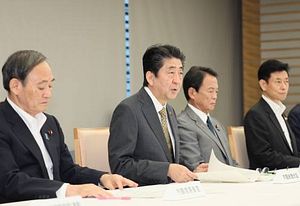Early Monday morning, a magnitude-6.1 earthquake hit Osaka and other parts of Japan’s second-largest metropolitan area. This is the strongest earthquake observed in the prefecture since recordings began in 1923. What made it devastating was not the magnitude, which was “relatively low” according to Kyodo News, but the shallowness of the quake’s epicenter – only 13 kilometers deep.
The Japan Metrological Agency warns that another strong earthquake could hit the Osaka region within a week, though this is likely not a prelude to the “megaquake” that is expected to occur in the future off the coast of western Japan. The long-anticipated Nankai Trough earthquake – when it occurs – will have devastating consequences for the population along the Pacific coastline.
Five people are known to have been killed by the quake so far and around 370 have been injured.
Several companies temporarily suspended operations, including Honda Motor Co., Panasonic Corp, Mitsubishi Motor Corp., and Daihatsu Motor Co. Tokyo stocks fell on Monday with the Nikkei Stock Average closing 0.75 percent down from Friday. However, this fall is not only because of concerns about the damage caused by the Osaka earthquake, but also general investor anxiety about U.S.-China trade tensions.
The earthquake struck during rush hour and affected many commuters. The Tokaido and Sanyo shinkansen bullet trains have since resumed normal operations.
Prime Minister Shinzo Abe told a meeting of relevant Cabinet members that “[d]amage on key infrastructure remains. I want you to make utmost efforts to restore public transport, gas, water, and other services.” The government established a disaster response task force at the Prime Minister’s Office shortly after the quake.
Comparisons – both fair and unfair – will likely be drawn between this government’s response to the Osaka earthquake and the 3.11 triple disaster or the 1995 Hanshin earthquake to score political points. Abe will be under pressure to centralize command without micromanaging, to foster cooperation at the municipal level without overreaching. Though this natural disaster is not on the scale of either the 3.11 or Hanshin earthquakes, given Abe’s grim political outlook, he cannot afford any misstep under this kind of scrutiny.

































